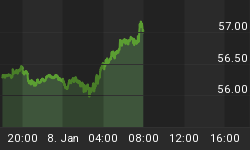There is virtually no economic sector on Earth that has not been impacted by the spread of the novel coronavirus, but few have been as thoroughly battered as the global energy industry. As industries and nations shut down around the world, the demand for oil plummeted, taking oil prices down with it, and the energy consumption patterns of the average person changed radically. In China, the nation’s severe shutdowns to contain the spread of COVID-19 curbed so many industrial sectors and took so many vehicles off the road that the novel coronavirus has indirectly saved lives on the whole by mitigating the country’s typically deadly levels of air pollution. Even the most conservative estimates show that an additional 4,000 children under the age of 5 and 73,000 elderly Chinese citizens over the age of 70 would have died in a business-as-usual scenario.
In the United States, energy consumption has tumbled to a 16-year low, a bad omen for the U.S. economy as a whole. The average amount of energy usage in the United States, according to the Indicator from NPR’s Planet Money, is an especially valuable indicator of how the economy is doing overall. “How much electricity the country uses tends to match how much the economy is growing or shrinking really closely,” said Cardiff Garcia, one of the show’s hosts, in an April report. “It can tell us how much worse the economy is getting in real-time, and it should also tell us when the economy has started to recover.”
But now, the nation is starting to reopen, and as people head back out into the world, get back to work, and resume their daily commutes, energy demand and fuel demand are starting to rebound as well. “As the nation reopens, gas prices rise,” USA Today reported this week. “According to fuel-savings app GasBuddy, the national average price of gasoline has risen for the sixth consecutive week from the low of $1.74 per gallon in April, and increases are expected throughout the summer.”
Related: How A Pandemic Made Americans Better Workers
As we head into the summer vacation season, families rekindle their summer plans, and road trips are back on the menu, gas prices will almost certainly continue to climb throughout the summer. While this may not sound like great news to consumers, it is a huge relief to U.S. markets, where the shale industry has taken a beating like no other.
After the West Texas Intermediate crude benchmark plummeted below zero in an unprecedented dive, closing out April 20 at nearly negative $40 per barrel, the global oil industry has been in a frenzy trying to recover oil prices. As the world watched to see whether the Brent international crude benchmark would follow its U.S. counterpart into negative territory, OPEC+ countries pledged to massive production cuts and the West Texas Permian Basin was rocked by a wave of bankruptcies, shut-in wells, and huge swaths of fired and furloughed employees. Now, these measures, as well as the gradual reopening of the economy, has led to a (tentative) climb in oil prices.
“It’s no surprise that gasoline prices have increased for the sixth straight week as gasoline demand has hit its highest level since early March as Americans are returning to the roads,” Patrick DeHaan, head of petroleum analysis for GasBuddy, wrote in a June 8 blog post. Compare this to late March, “when most of the nation was under stay-at-home orders [and] the national average fell below $1.99 a gallon.” USA Today reports that “Several states had gas for less than $1 in April.”
There are still troubled waters ahead for the oil industry, however, especially in the U.S. where prices aren’t anywhere close to the $40 per barrel that the shale industry needs to break even. "While I don’t see oil’s strength holding too long given that oil demand remains 20-25% below a year ago, I believe the anxiety pushing oil prices up is coming from the fact that the economy may be recovering quicker than most anticipated," DeHaan said. "For now, motorists will likely continue to see gas prices rising for the weeks ahead.”
By Haley Zaremba for Oilprice.com
More Top Reads From Safehaven.com:

















